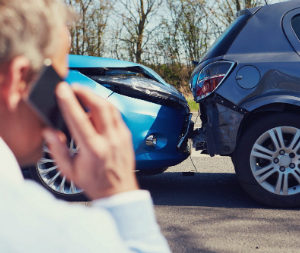Car Insurance 101
 To understand car insurance from its very basics, then we will have to ask and answer this all-important question:
To understand car insurance from its very basics, then we will have to ask and answer this all-important question:
What is Car Insurance
Put very simply, car insurance is a business agreement between two parties in which one party (the car owner) agrees to pay the other party (the insurance company) an agreed-upon sum, at agreed upon intervals (monthly or yearly) in exchange for the assurance that should an agreed upon incident or incidents occur, the insurance company will bear the cost to an agreed upon extent.
So a car owner approaches an insurance company and says to them, “I want to ensure my car so that if someone hits me, you will bear the cost of repairs and any injuries that result as an outcome of the crash.” The insurance company says, “Okay. If you can pay amount A monthly, we will bear the cost of repairs and injuries to a limit of X amount. If however, you can pay amount B monthly, we will bear the cost of repairs and injuries to the limit of double X amount.”
The above just paints the basic picture of what car insurance is in the simplest of ways. Car insurance is one of the most common types of insurance. This is mainly because in most states, and indeed countries of the world, every driver is required to have a minimum level of car insurance coverage. This minimum may differ from place to place but in most cases, a minimum exists.
As we proceed, we will look at this in more details.
Basic Insurance Terms
To help us further understand our explanation of the basics of car insurance, we shall quickly list and define some important terms you are likely to come across in this article. This should help you quickly understand any concept or processes being explained.
We shall try to list these in alphabetical order.
Actual Cash Value – This refers to the actual amount you will be paid to replace the insured car after considering the current brand new value of the car and then subtracting the depreciation value from this current purchase cost.
Adjuster – When you make a claim on an insurance policy, the insurance company will investigate that claim to know if it should be honored. The person who does the investigation is called an adjuster.
Agent – This a person from whom you can purchase insurance policies.
Deductible – This is an amount that you have to pay when you make a claim before your insurer will honor their part. If you have a $1000 cover with a deductible of $200; if you make a claim, your insurer will only contribute $800 while you will contribute the remaining $200.
Insurer – The insurance company providing the insurance cover.
Liability limits – This refers to the maximum you can be paid in a particular cover. It is either the maximum amount you will be paid or the maximum amount the insurer will put up towards honoring your claim.
Policy – This is the document or contract where the details of the agreement between the insured and the insurer are contained.
Premium – This is the amount you pay to the insurance company to maintain your insurance cover with them.
Surcharge – When you make a claim as a result of a crash, if it is discovered that the accident was caused by you or that you were at fault, an extra charge may be added to your premium. This is called a surcharge.
Underwriter – This is a person in the insurance company who looks at your application to be insured and determines if the application is to be accepted and the premium that should be charged for the cover sought. The process is called Underwriting.
Types of Car Insurance Policies
Now that we have these basic terms defined, let’s now look at some common types of car insurance policies or coverage.
Personal Liability Cover
This is the most basic coverage anyone can get. This is also the type of coverage that most states in the U.S and other countries of the world demand that every driver or car owner gets. Like explained above, the liability limits or minimum required cover will differ from state to state.
Personal Liability Insurance is an insurance coverage that protects you from liability resulting from a car accident involving you. This includes cover from injuries and damages to property. This means that with this type of coverage, the insurance company should take care of the costs for treating the injuries of the other party and also paying for any damages you caused to their property or public property. This will all be within the liability limit of your coverage.
One interesting thing to note about this type of cover is that any injuries to you (the insured) or damages to your car or property is not covered and will not be taken care of by the insurance company.
This coverage is usually broken into three parts – Liability limit for each person for bodily injury, liability limit for each accident for bodily injury and liability limit for property damage. You either determine the limit you want for each case or you go with your state’s limit.
Medical Coverage and Personal Injury Protection
In personal liability cover above, we saw that the cover does not take care of injuries to the insured. However, with medical coverage or personal injury protection the insured and others with him/her in the car receive cover for the treatment of injuries.
In the case of personal injury protection, the cover can go even further to not only cover the medical bills but to also cover any loss of income arising from the accident and more.
Collision
This type of policy provides the insured with cover for damages to their car arising from accidents with other cars, stationary objects and more. This is to your car what personal injury protection is to your body.
Uninsured or Underinsured Motorist Policy
Despite government’s best efforts at ensuring that all drivers have a minimum level of car insurance cover, some still insist on driving without any cover or some drive with the barest minimum they can get away with. In the event that your car is hit by such a driver, this policy will provide you cover to the extent of the other driver’s coverage limit in the case of underinsured drivers while in the case of uninsured drivers, it will cover the cost of your repairs to the limit of your coverage.
Comprehensive
As the name suggests, this is a more robust policy. It covers a wide range of risks not including a collision with other cars or object. This will cover against the theft of your car, damages from natural disasters, collision with animals, break-ins etc. You can check all that is covered in the fine prints.
Conclusion
While the state has a minimum cover it demands of all drivers, it is actually wise for each car owner to choose car insurance policies that best suit their needs. In most cases, the states’ minimums are very low and going with them will amount to being underinsured.
Get adequate car insurance for you and your household.
- Floor Jack Storage Ideas and Tips - November 19, 2019
- Tips for Using a Car Jack - November 12, 2019
- How Often Should You Wash Your Car in the Winter? - November 5, 2019

Leave a Reply